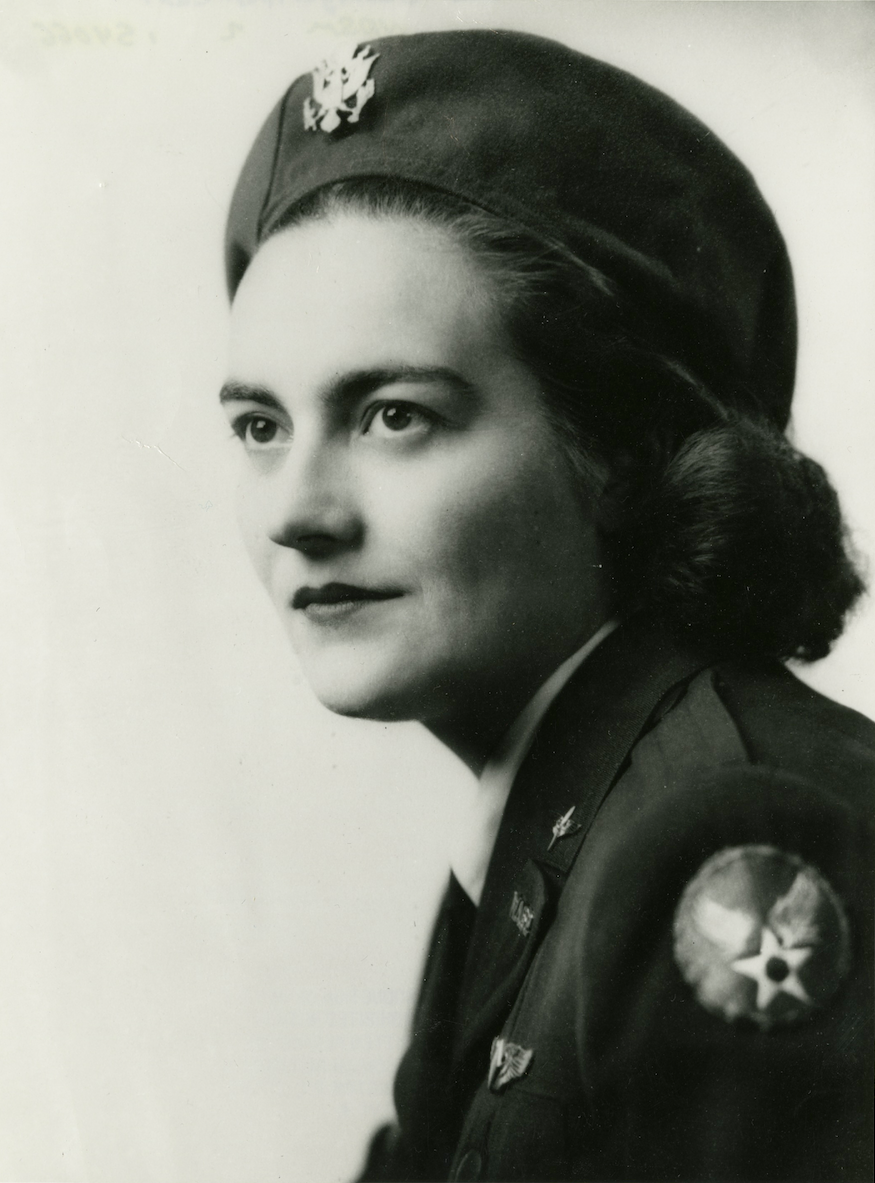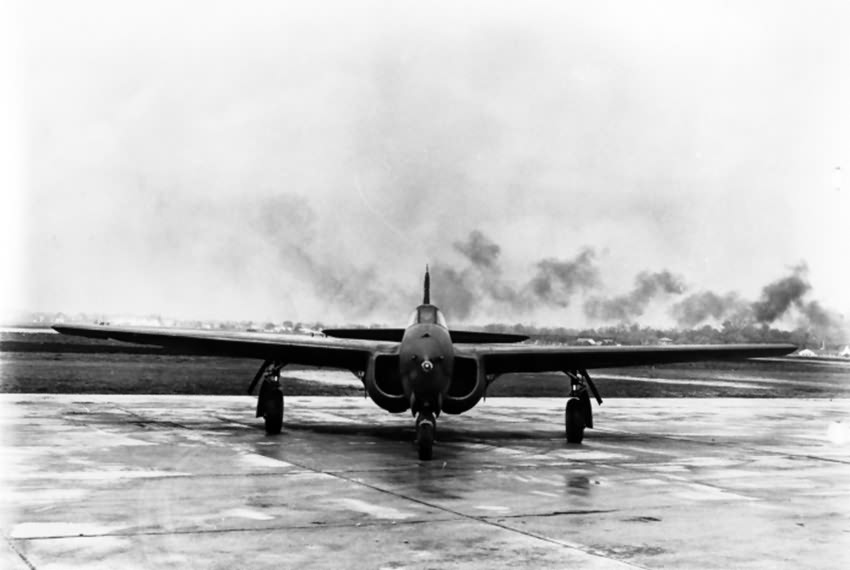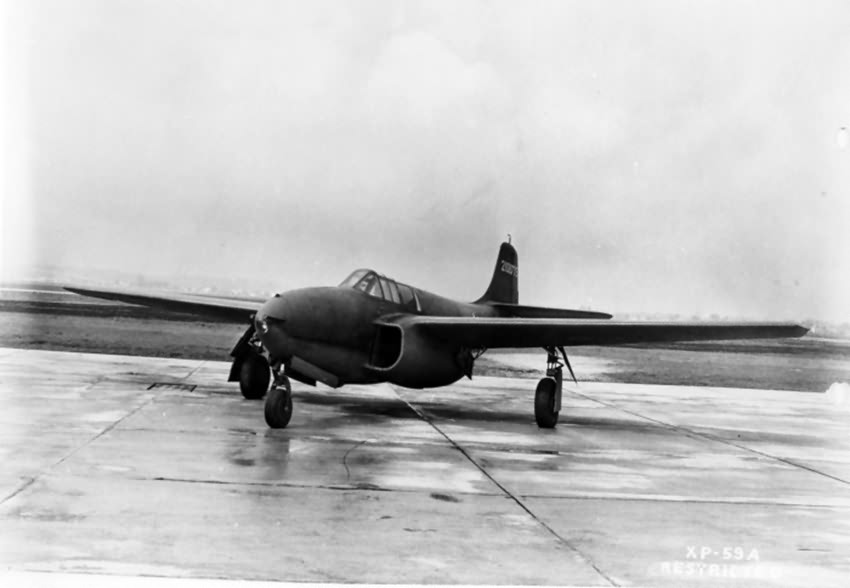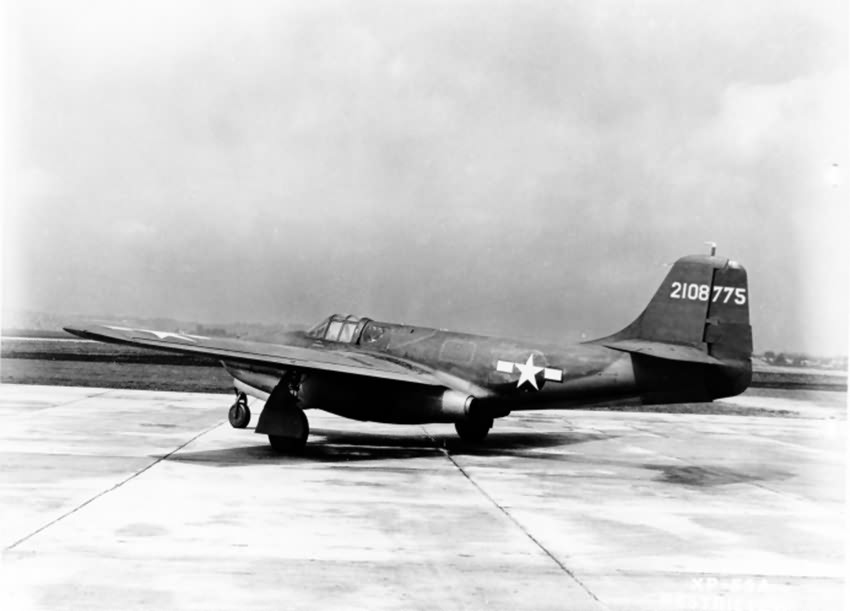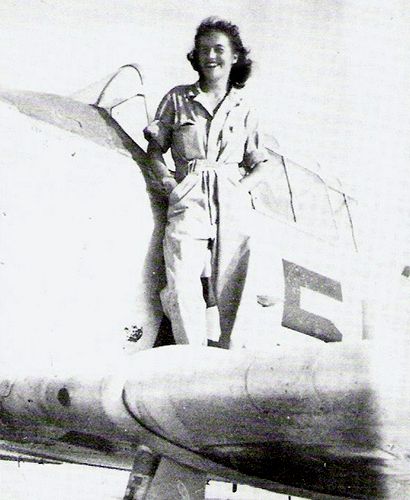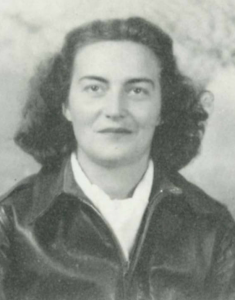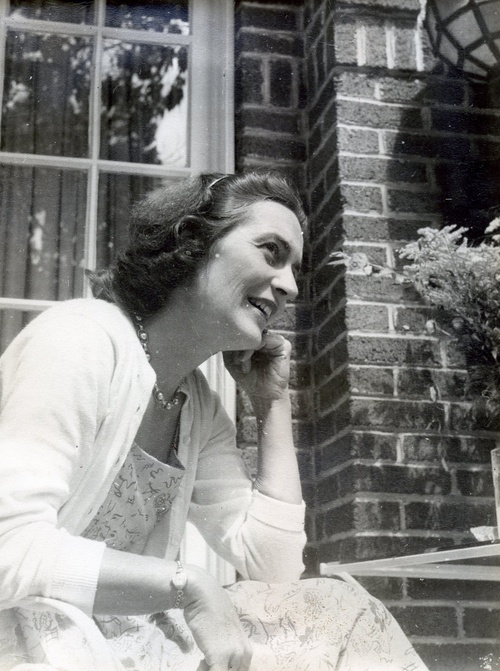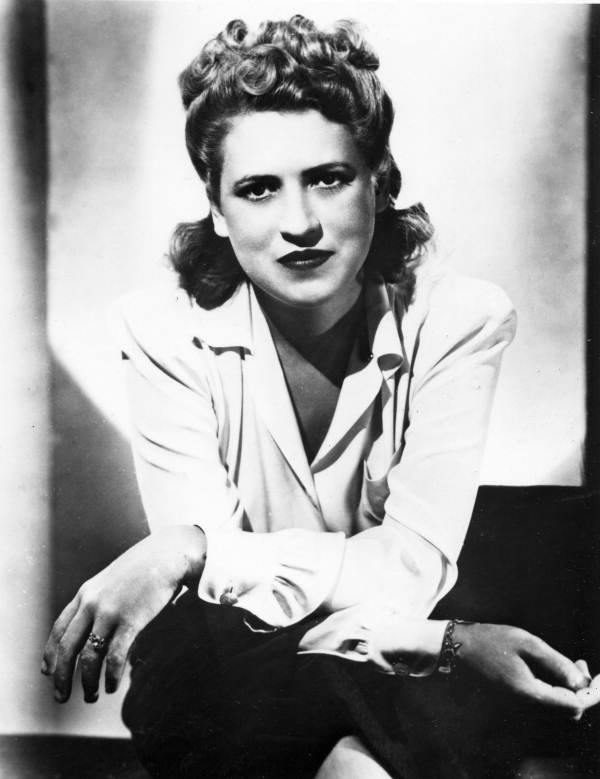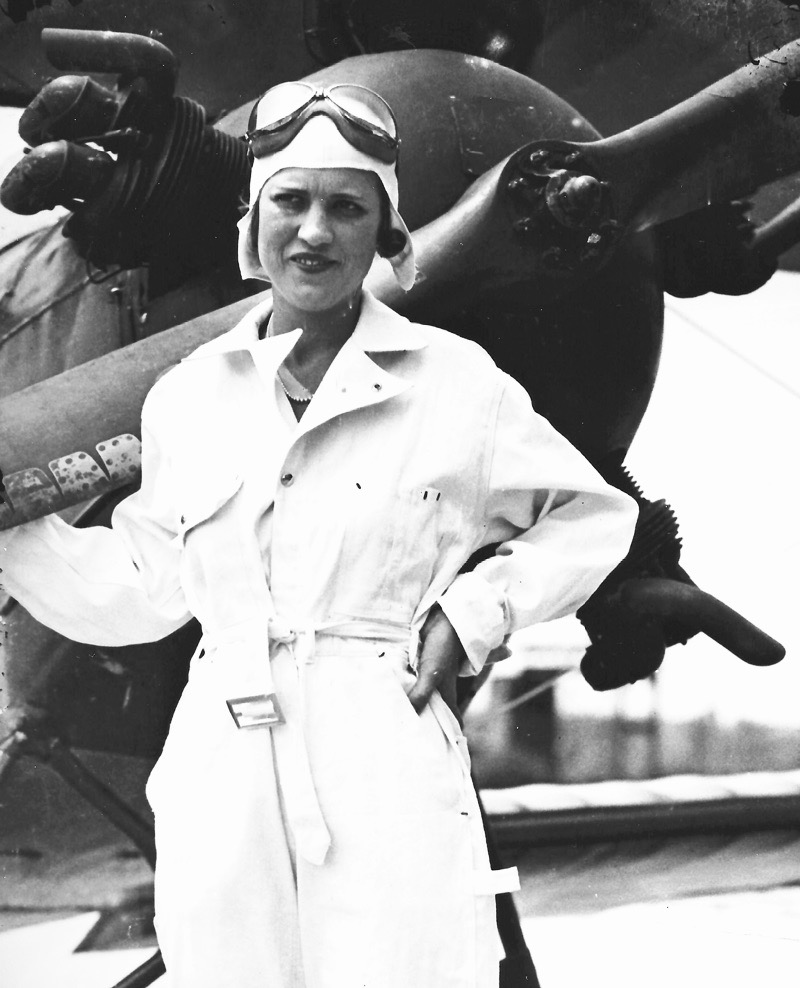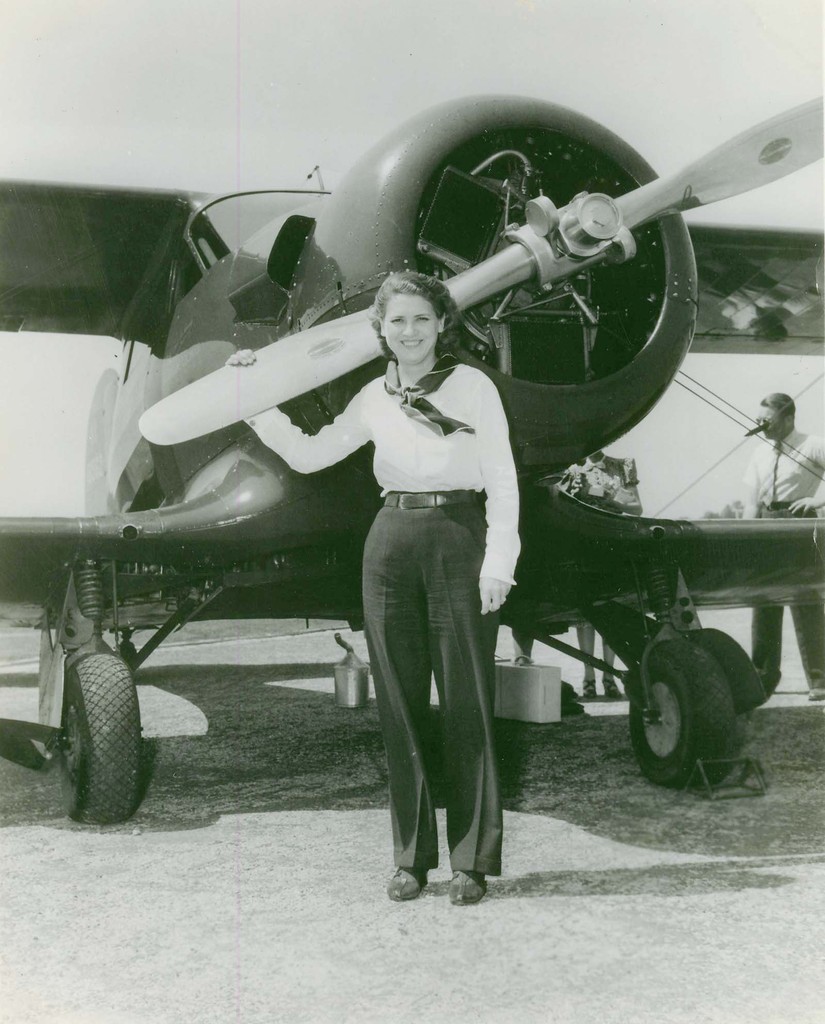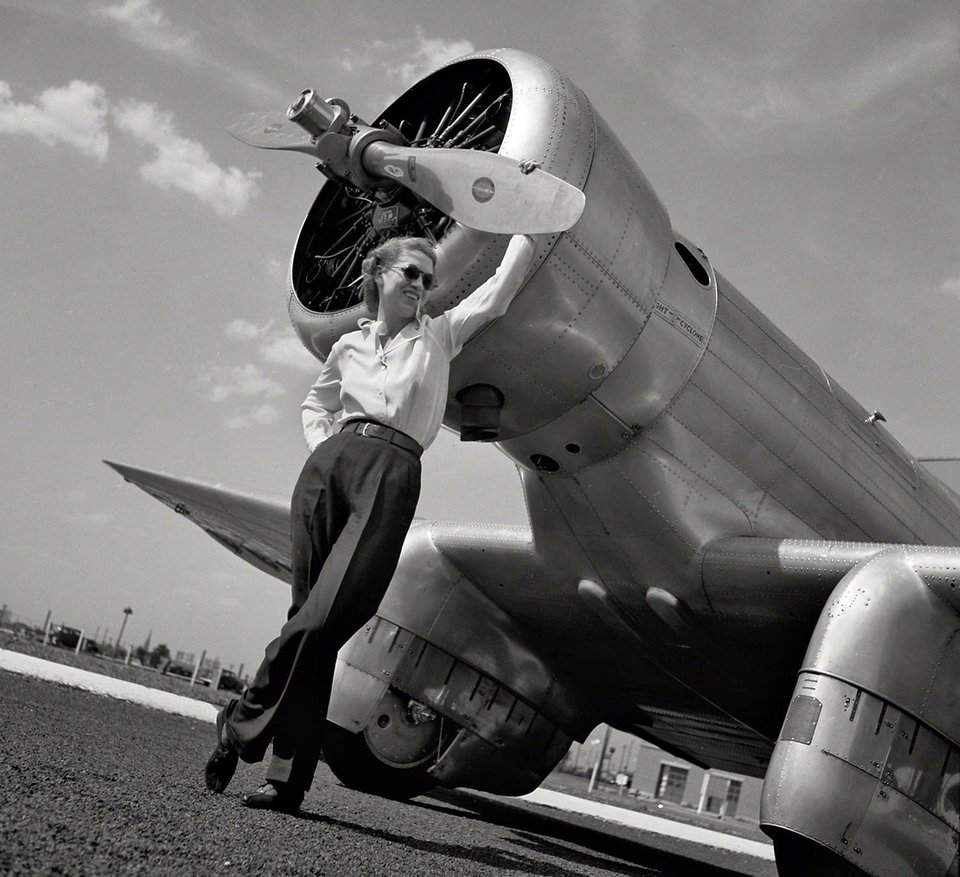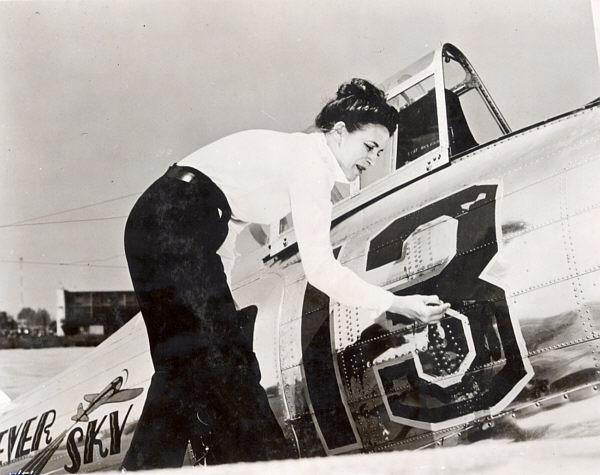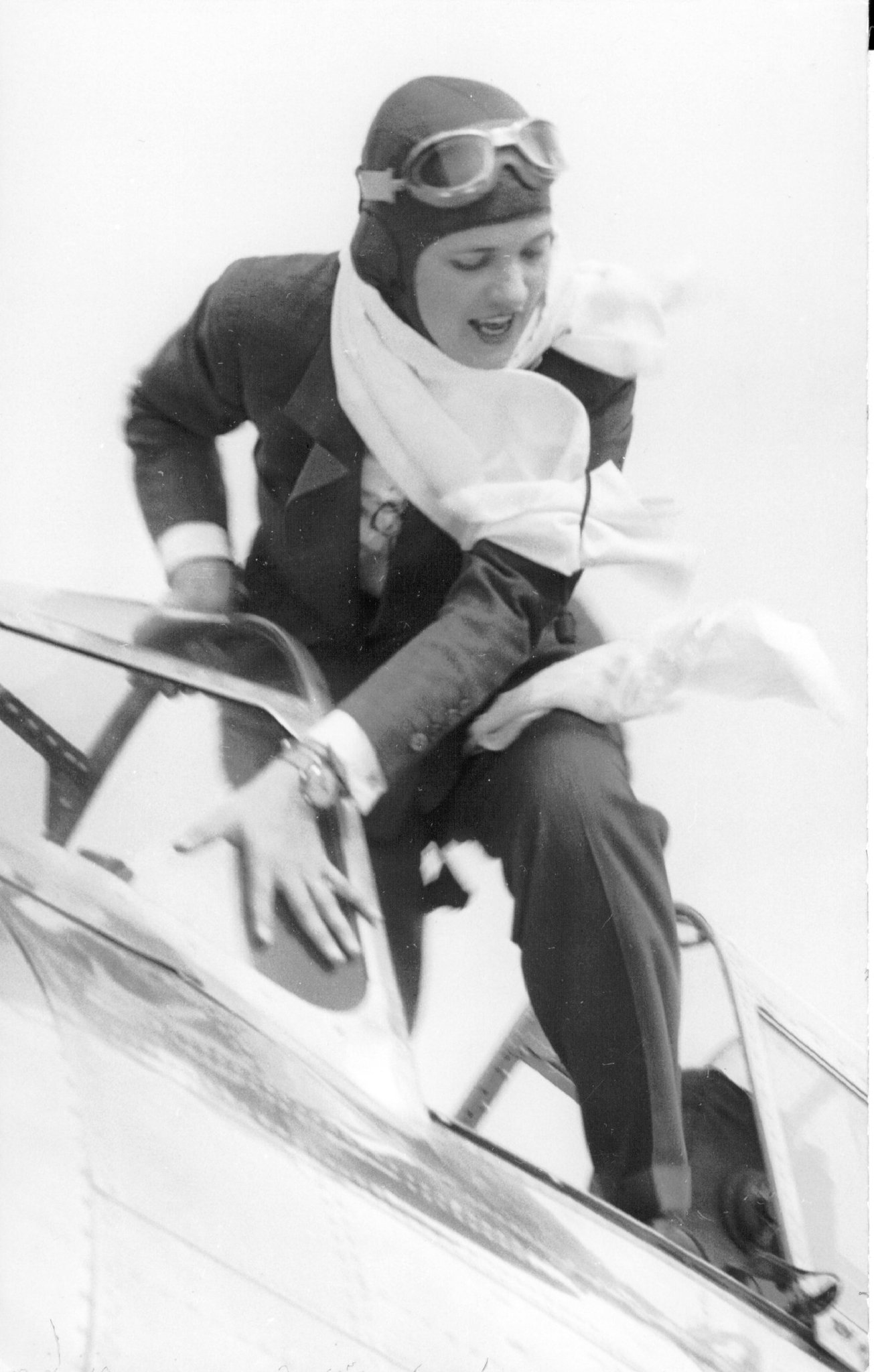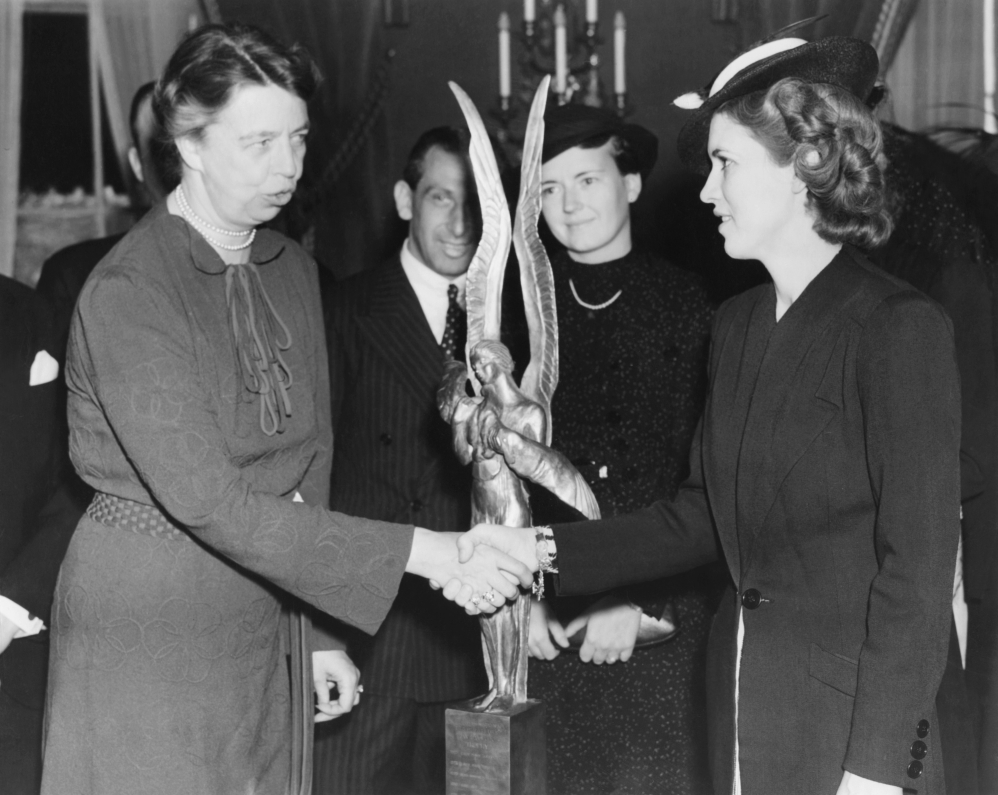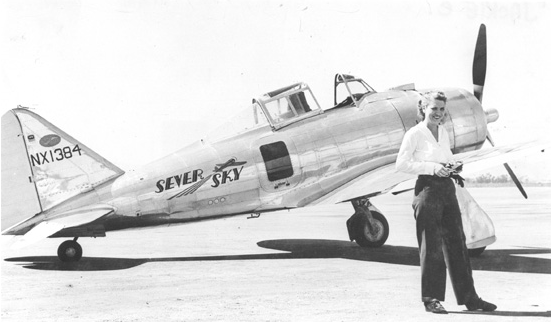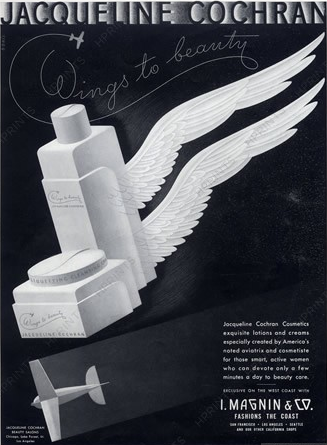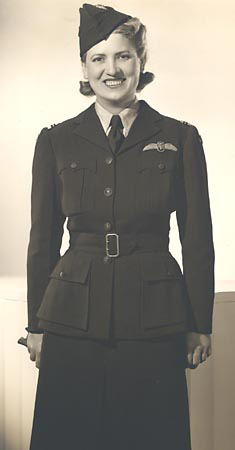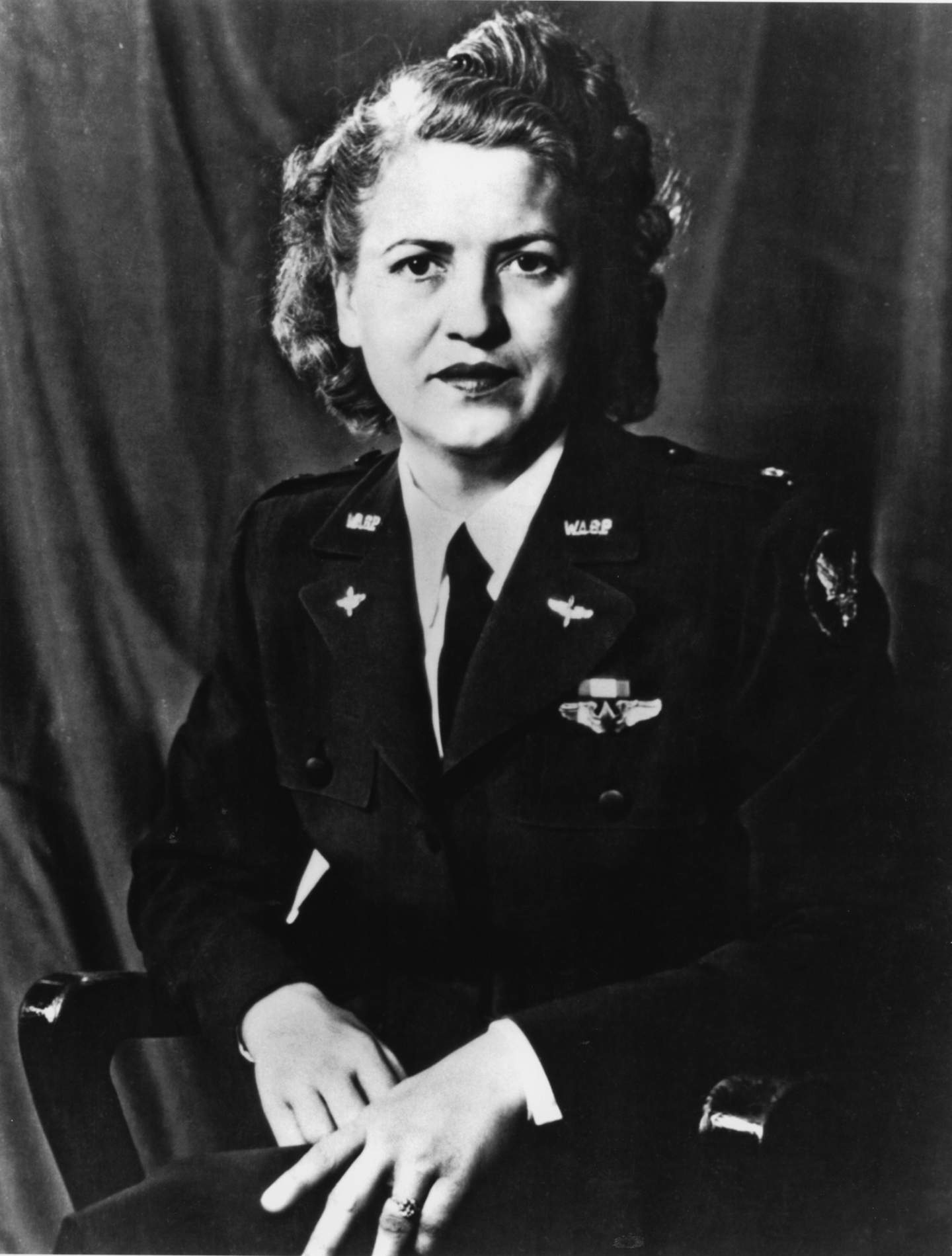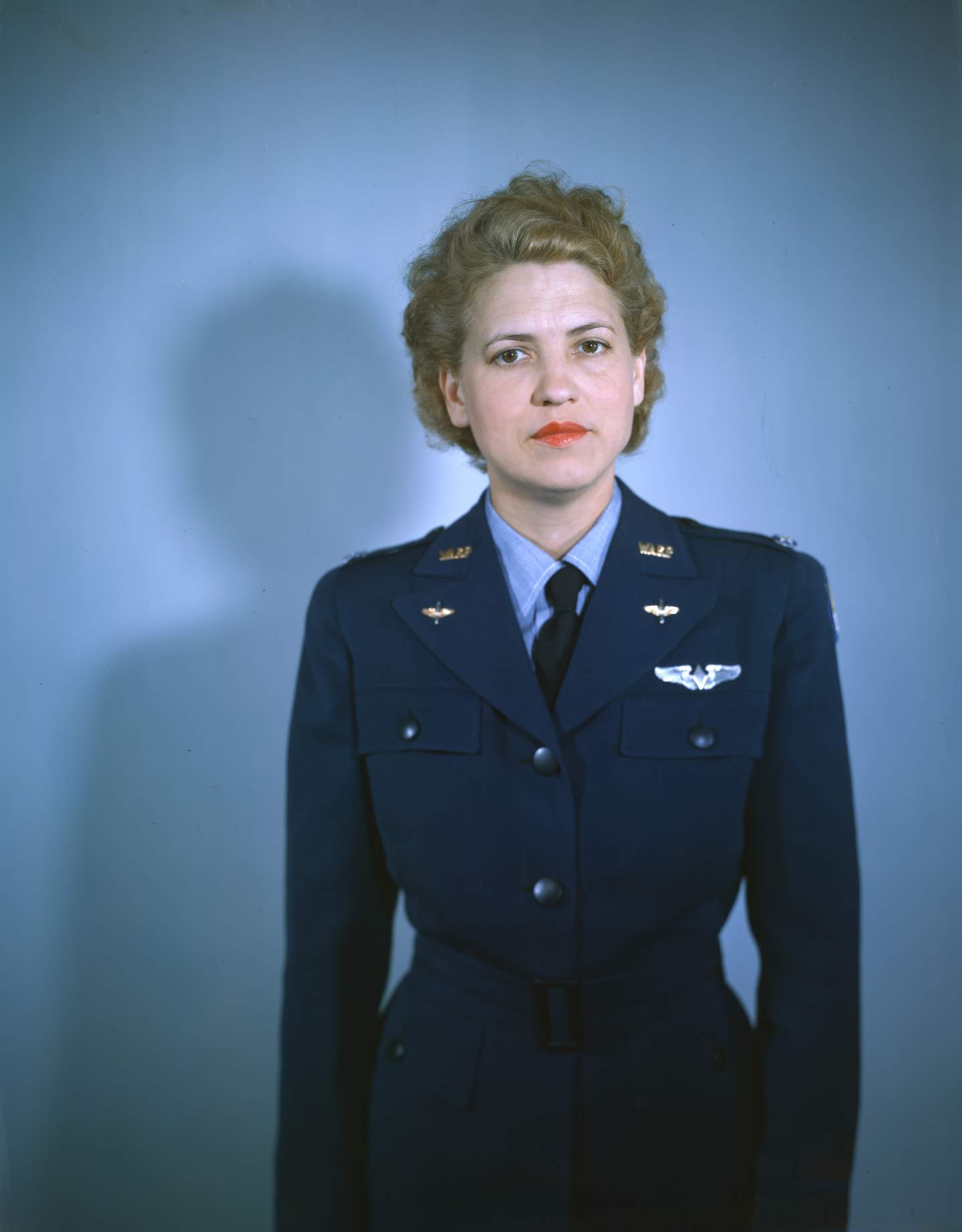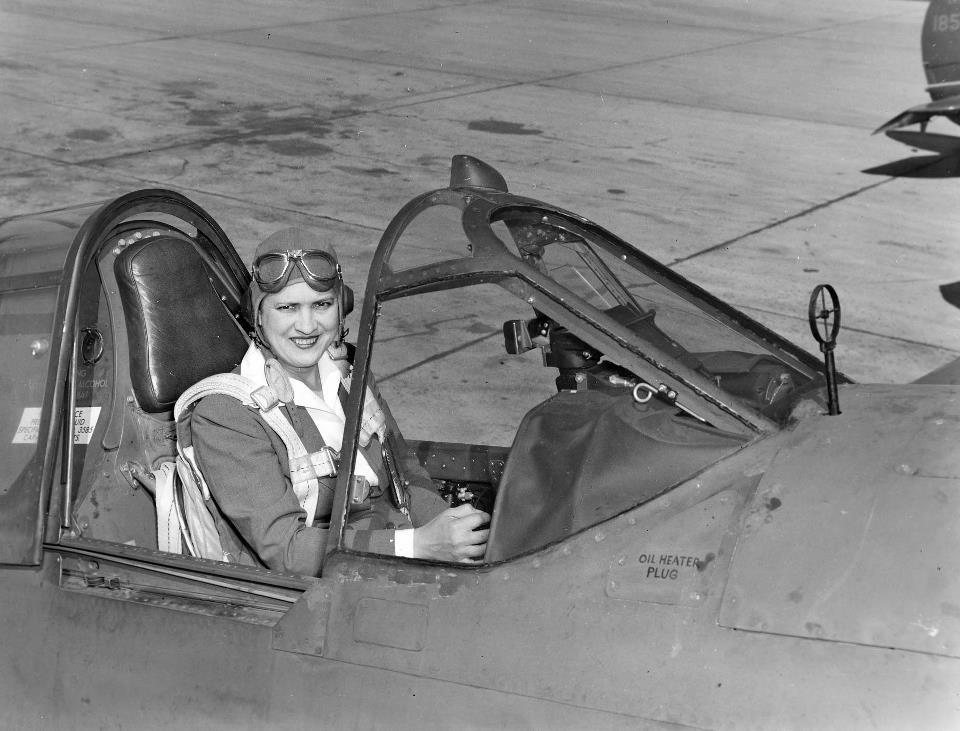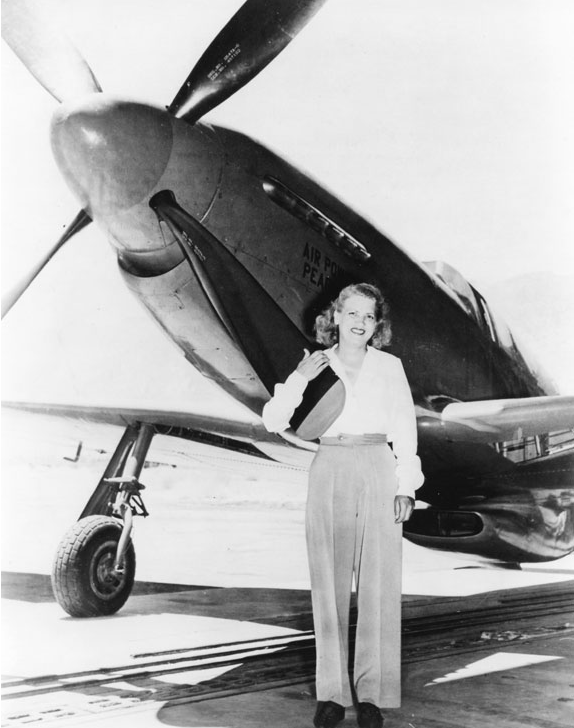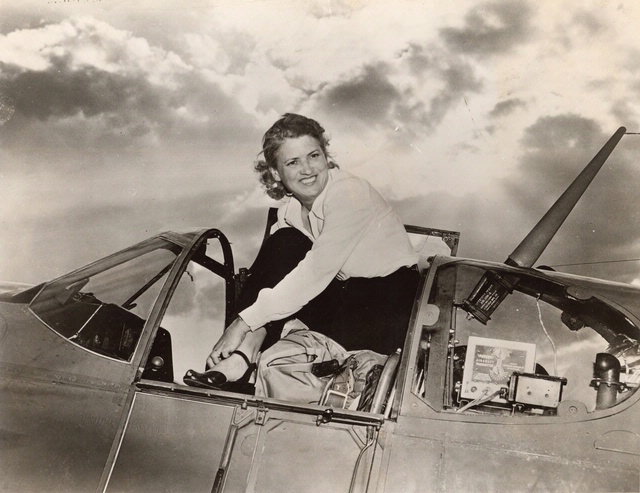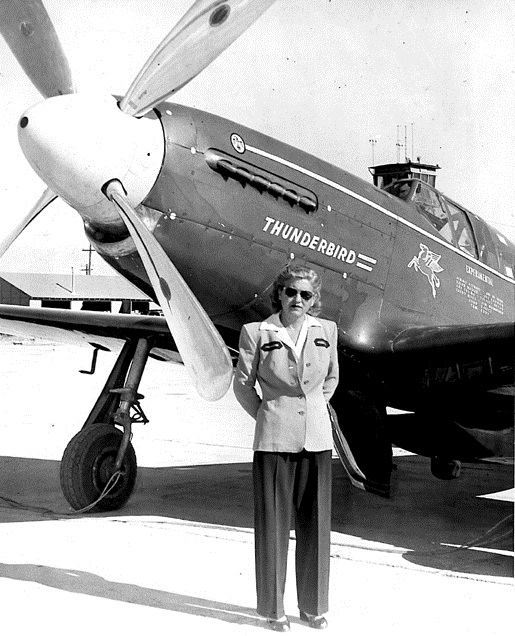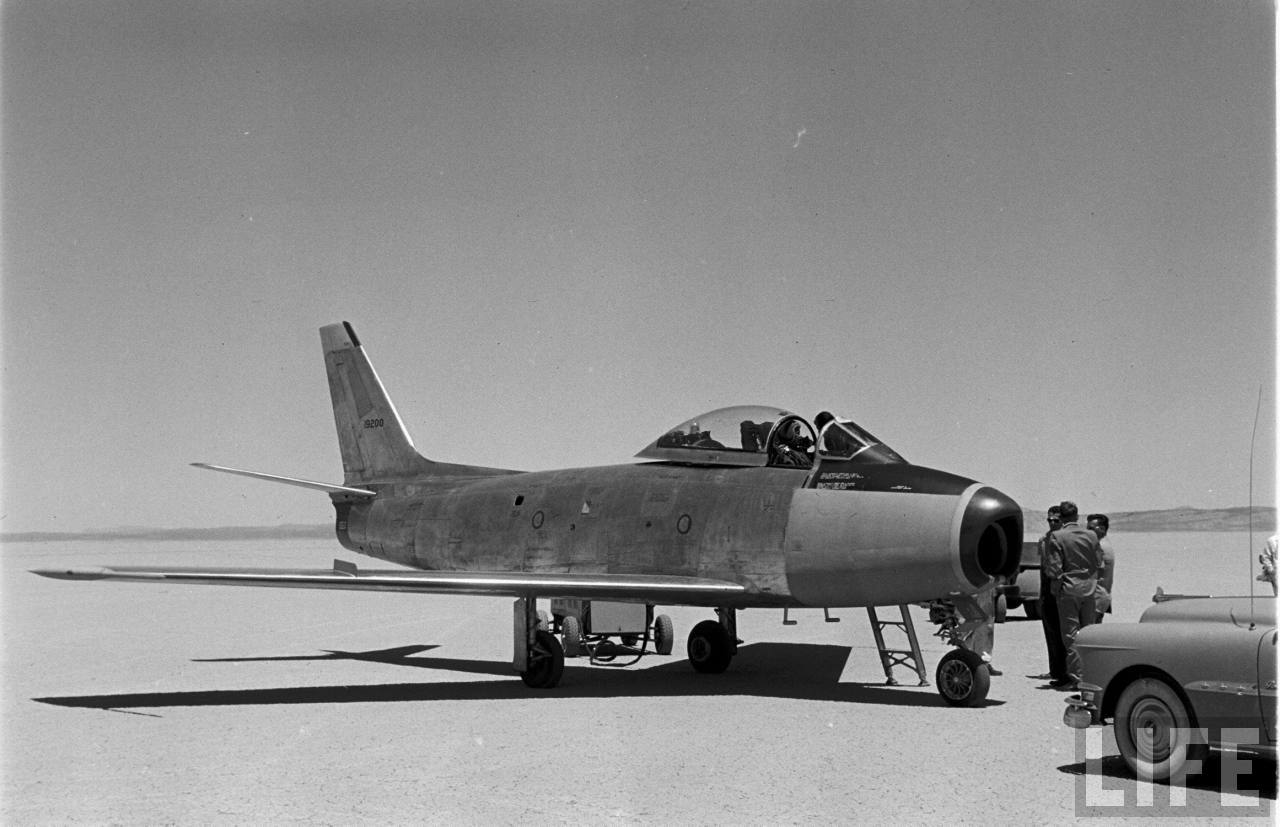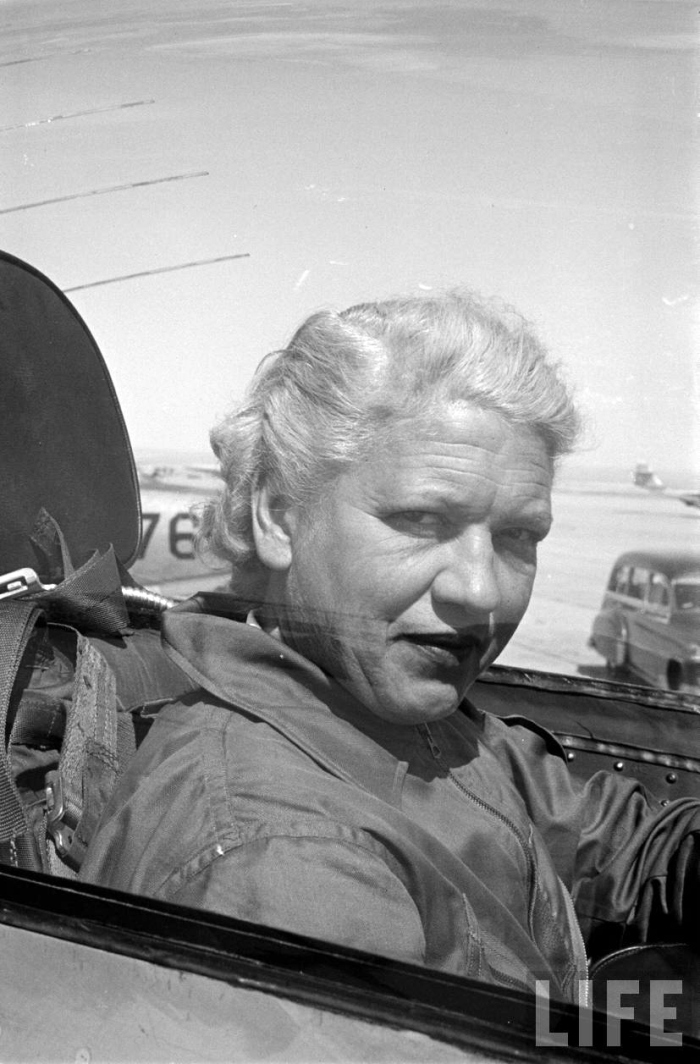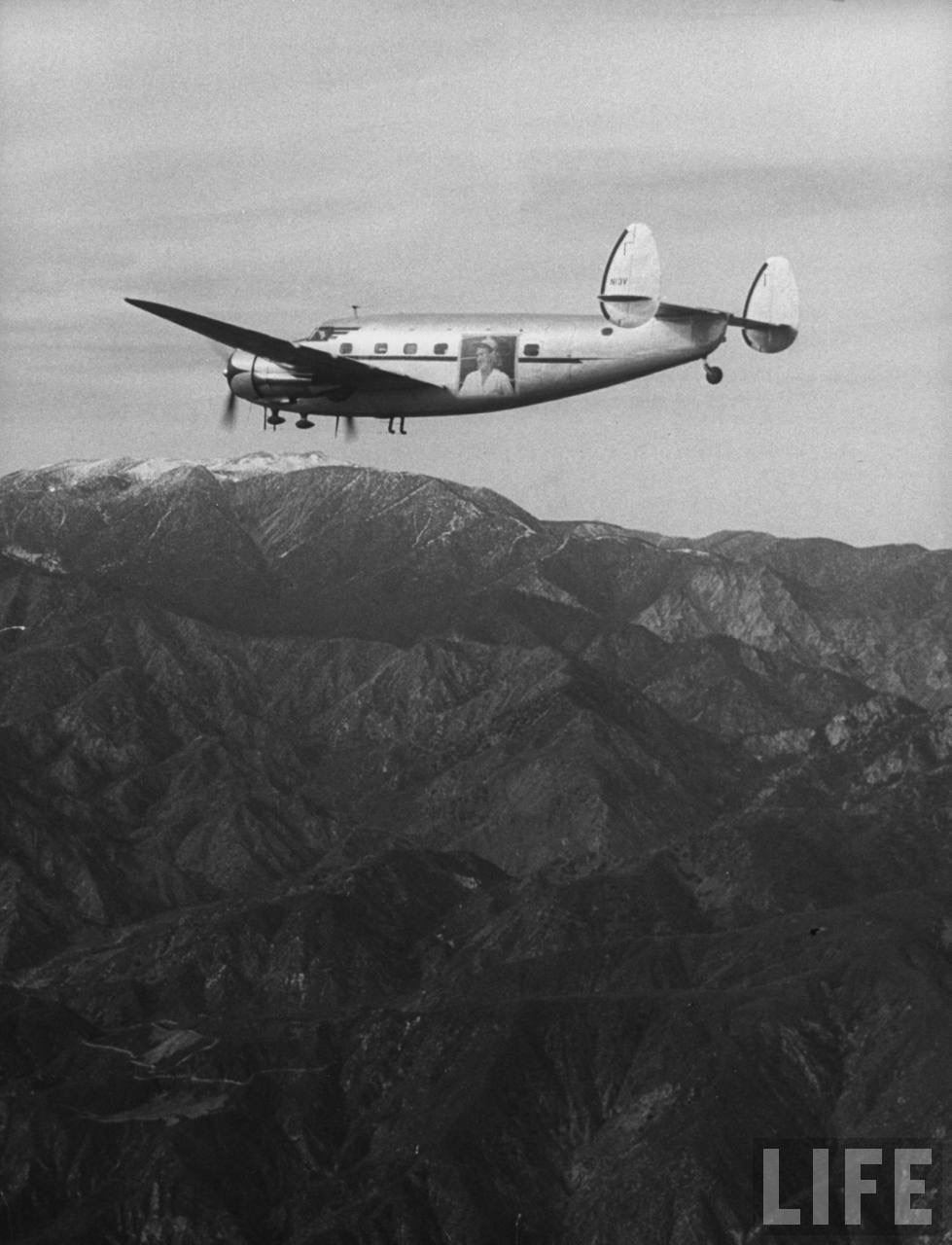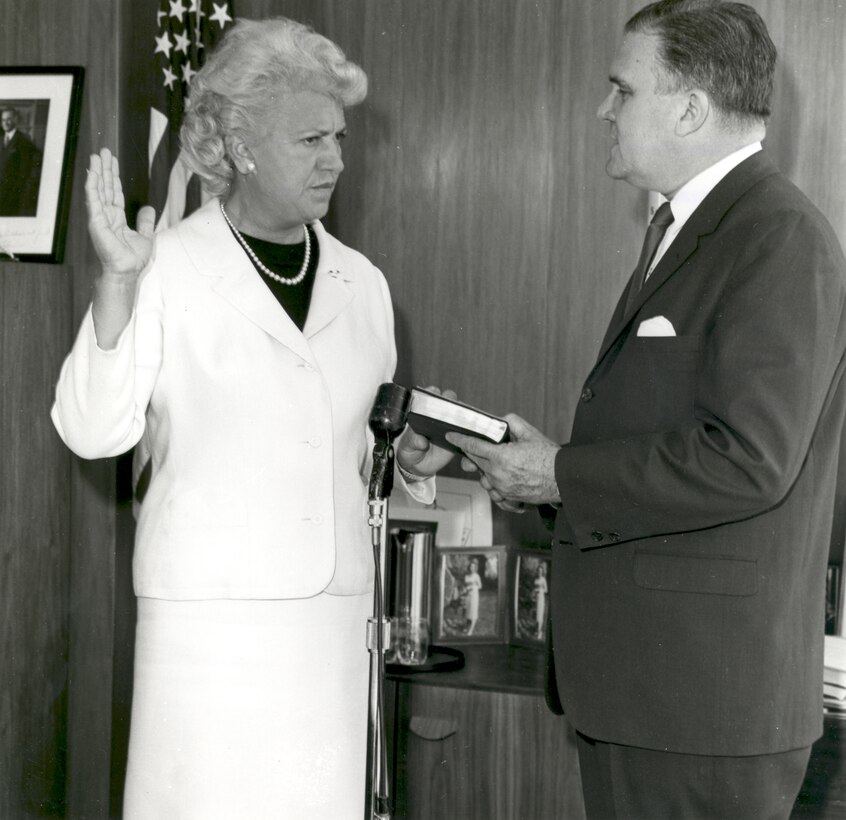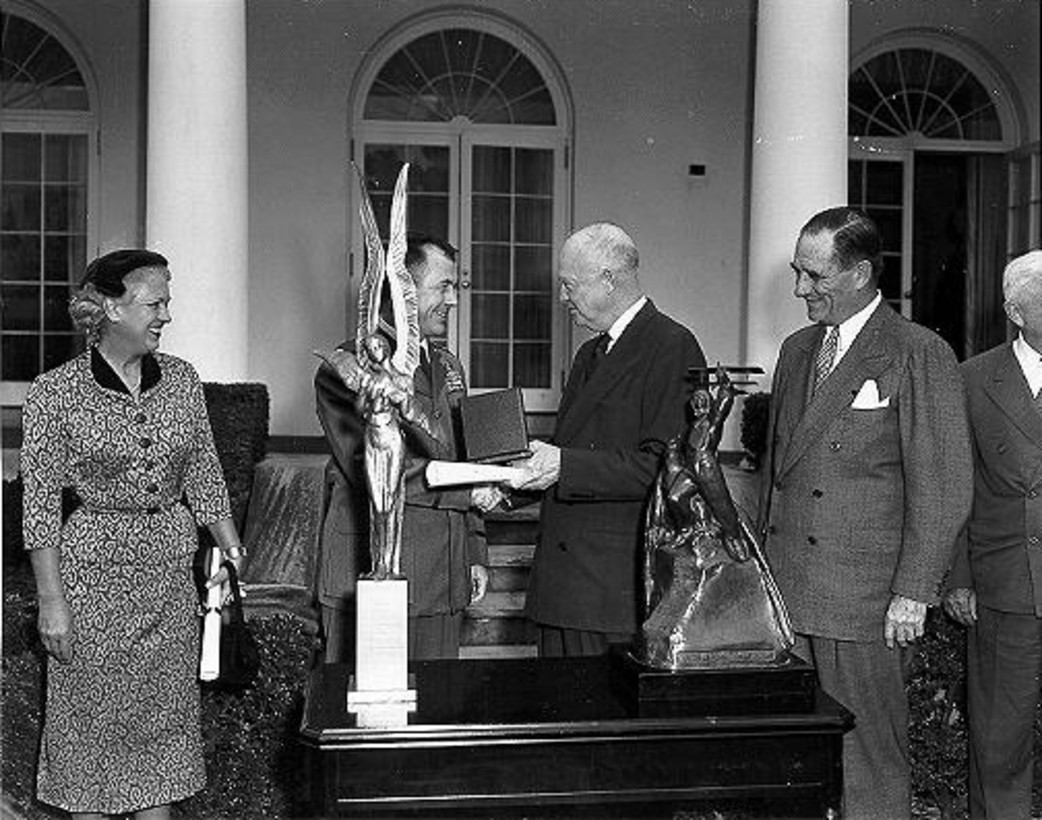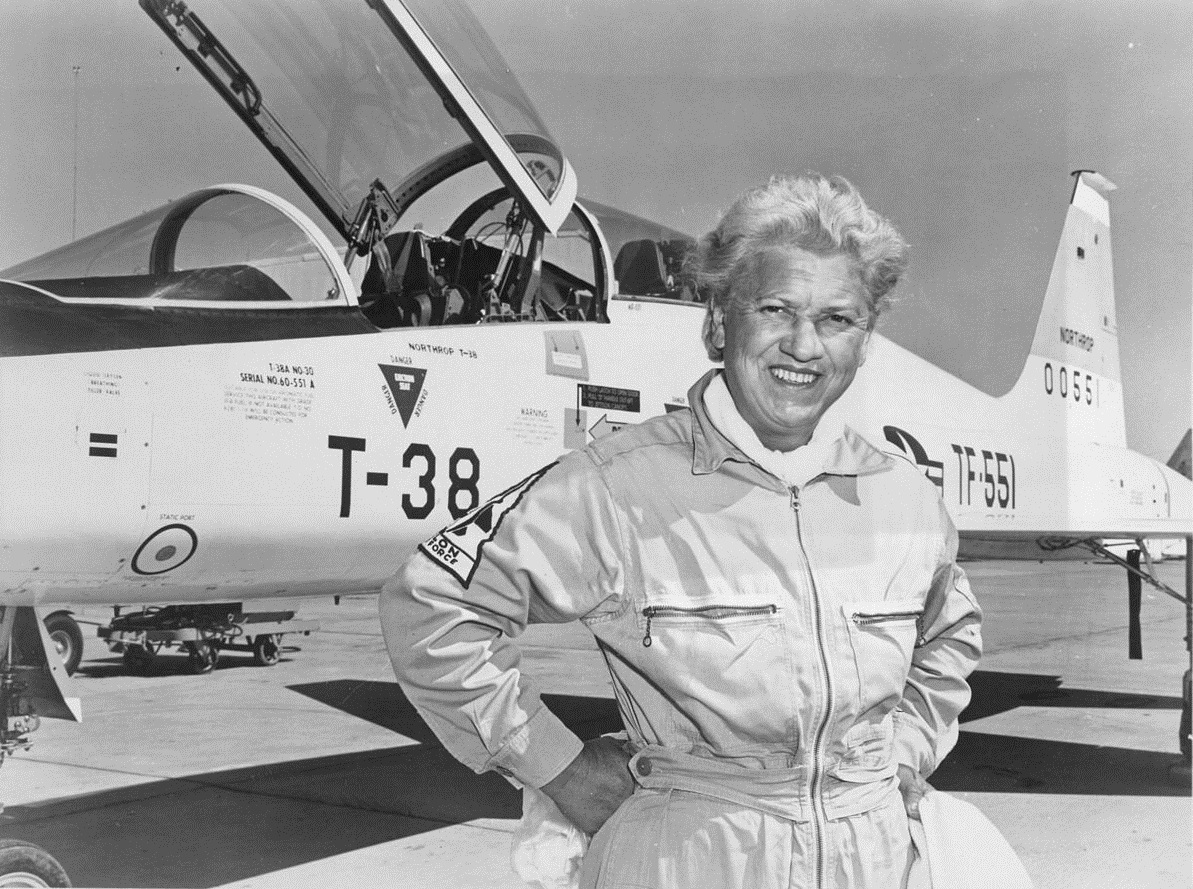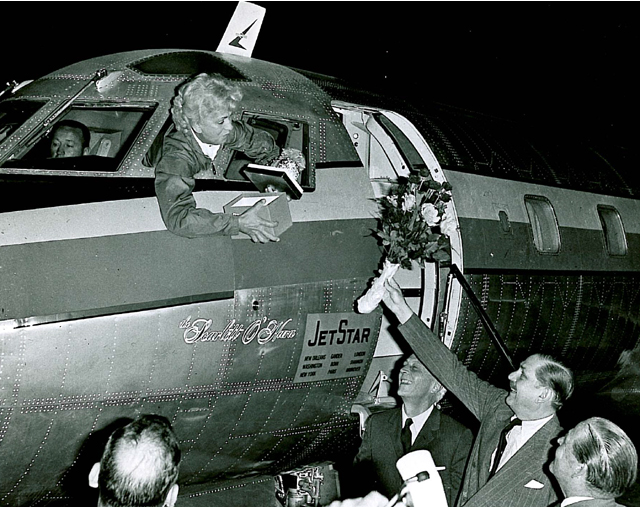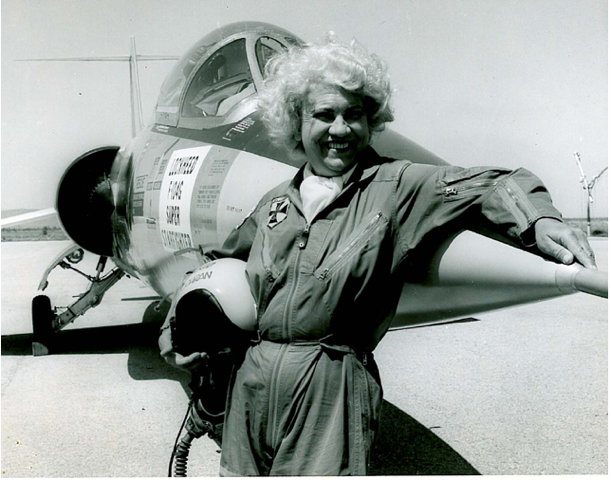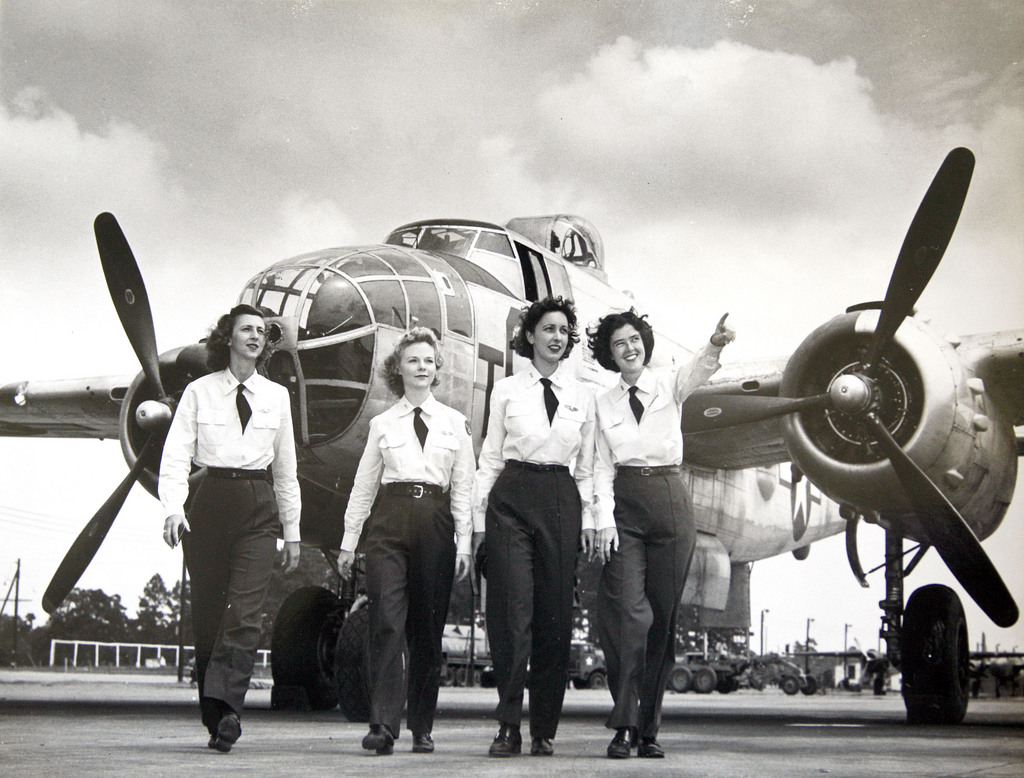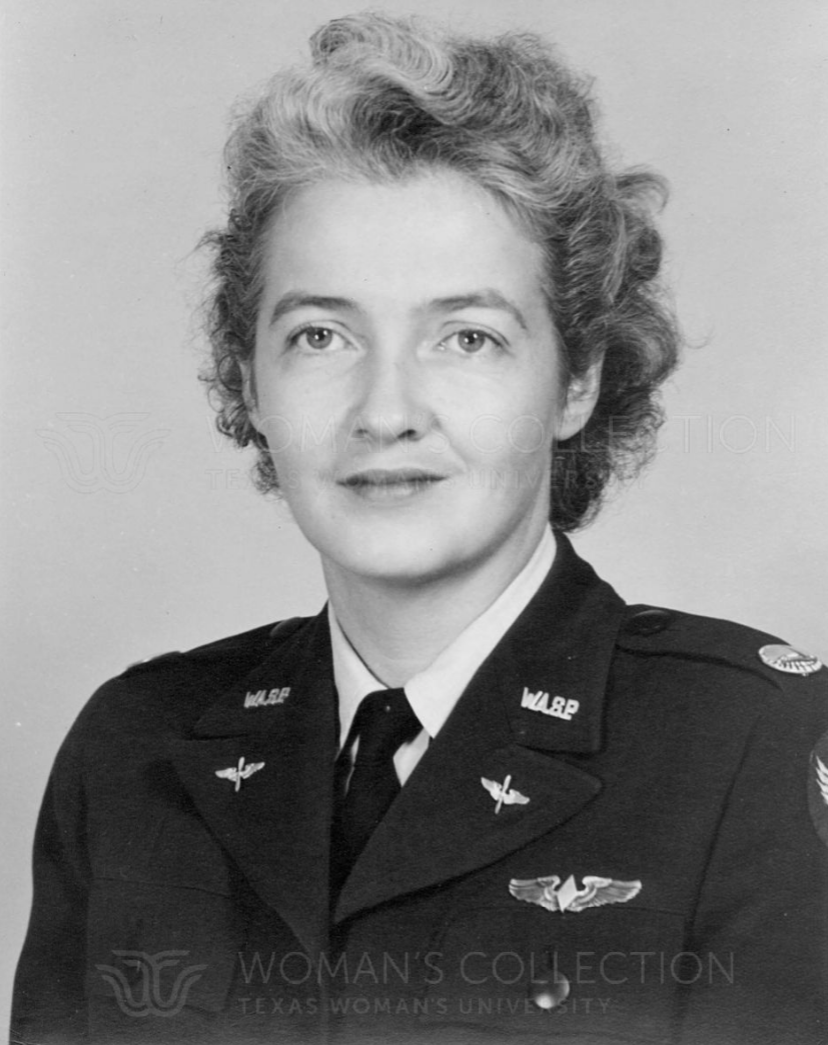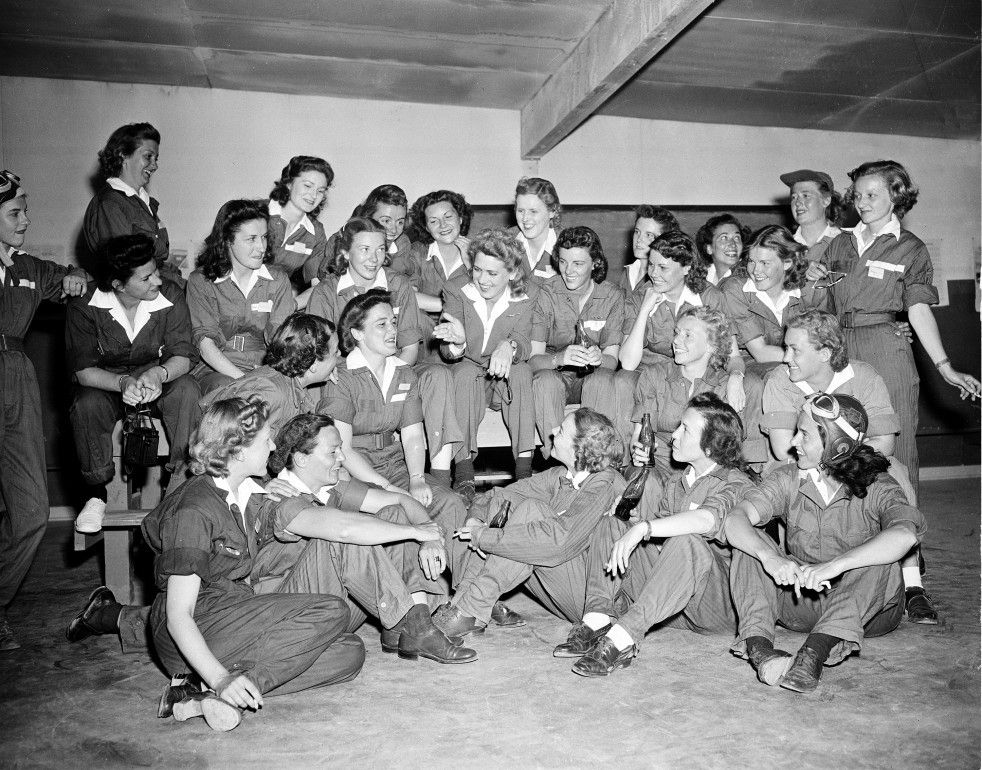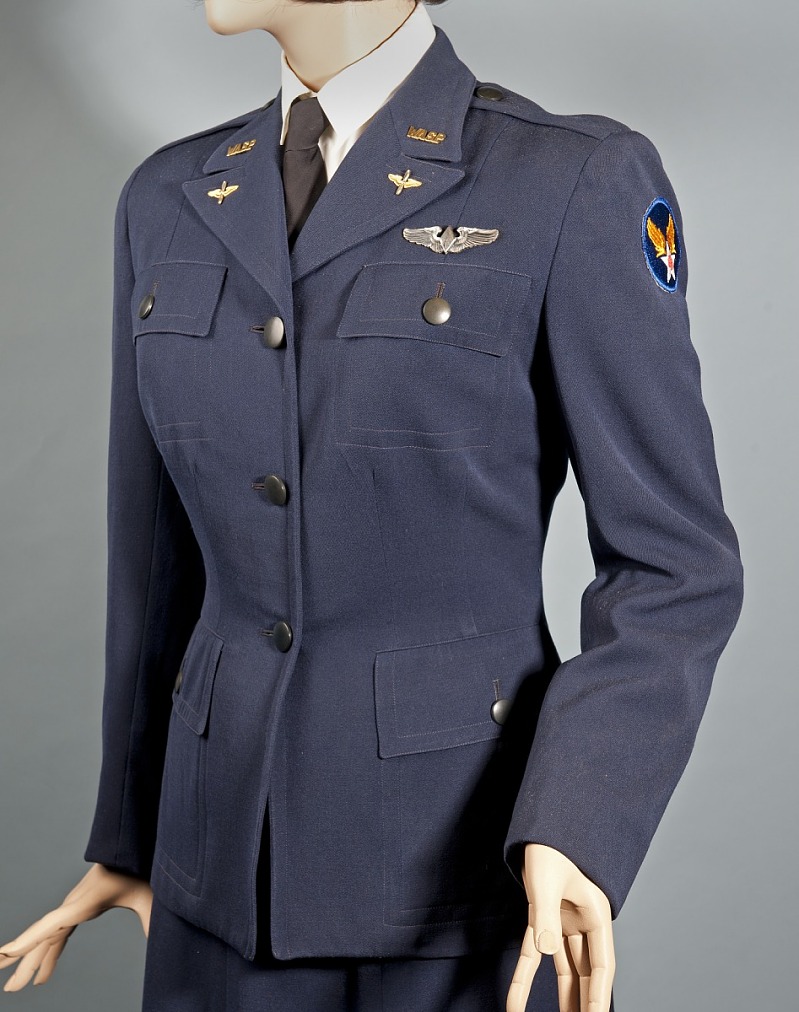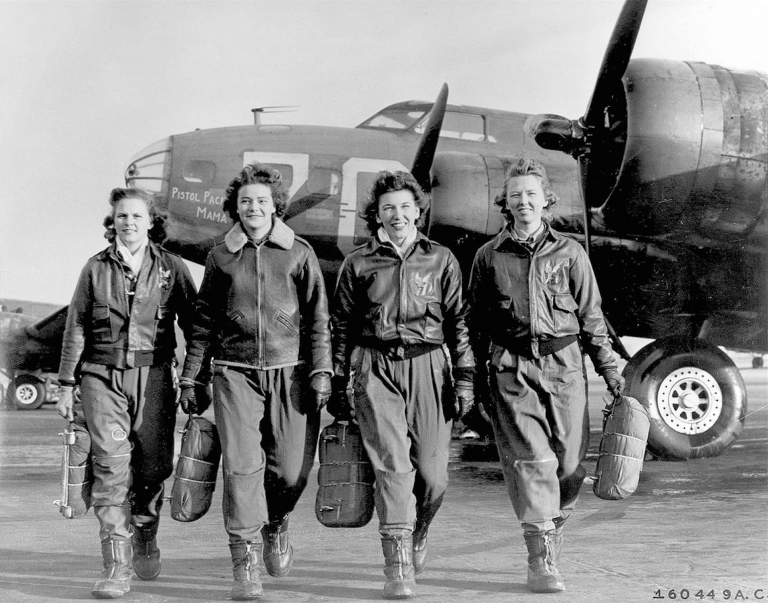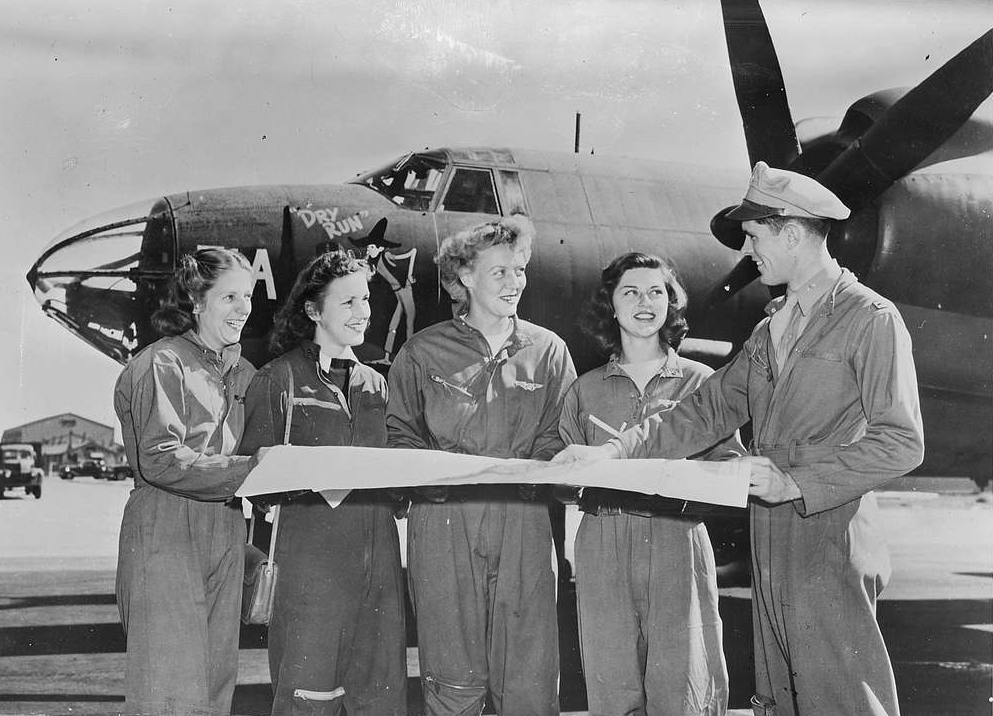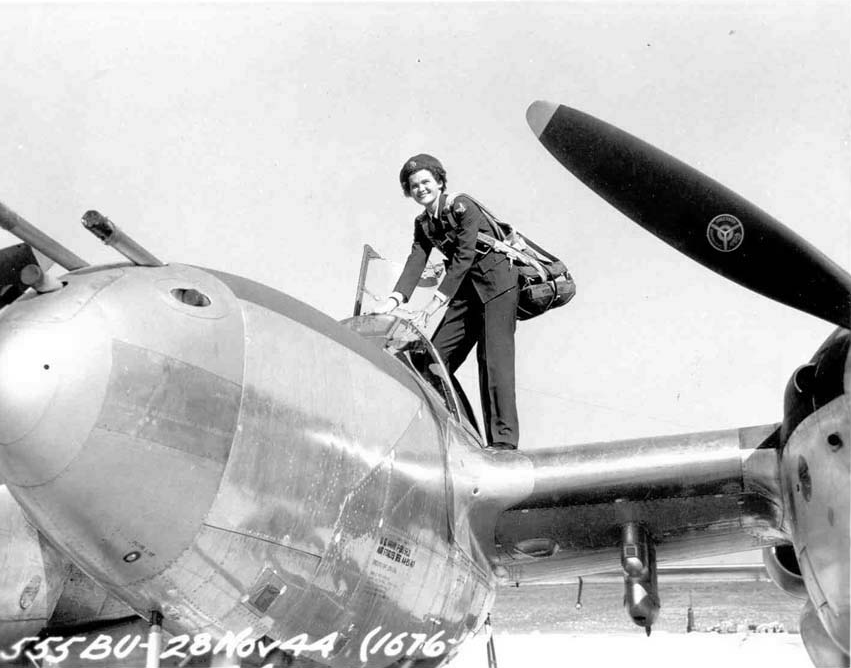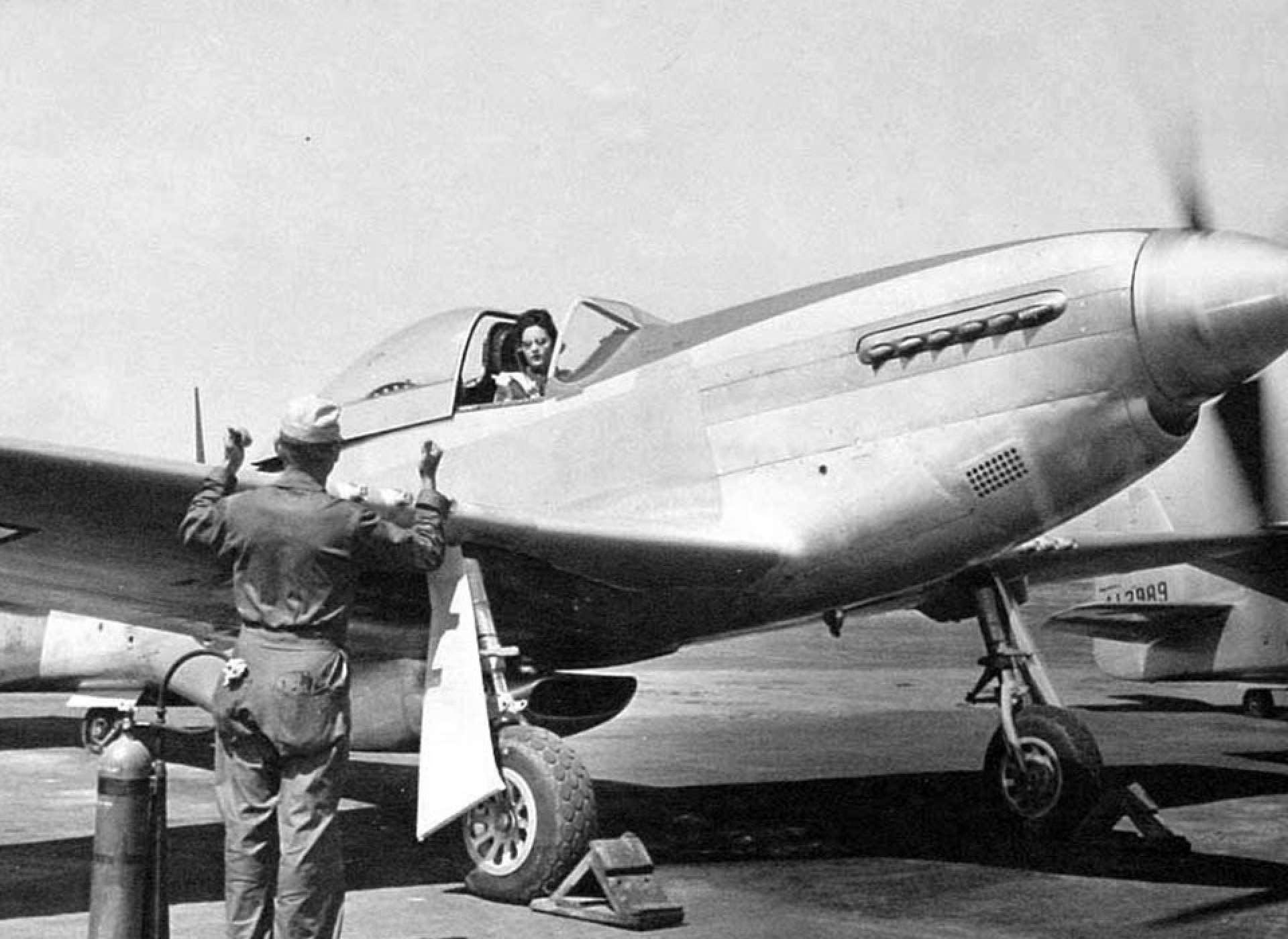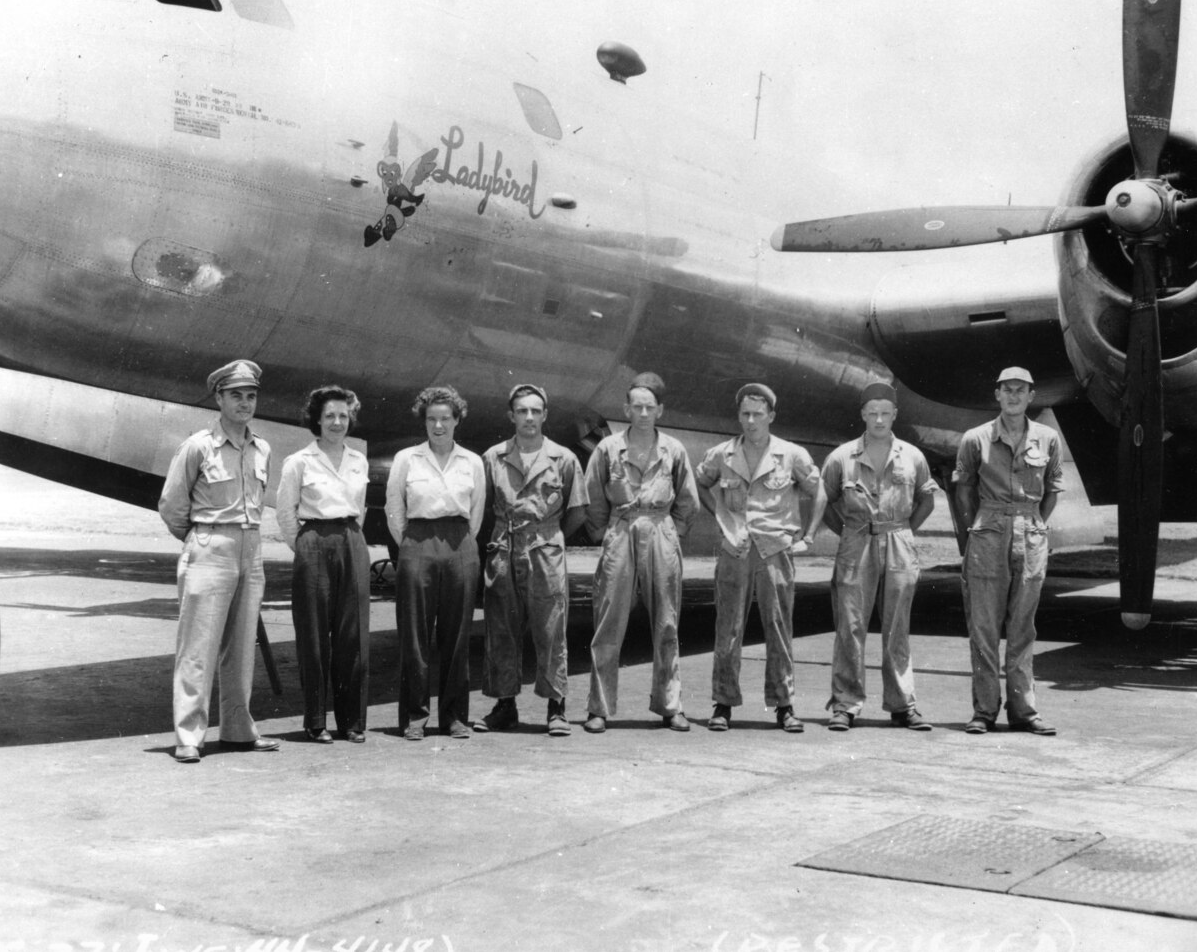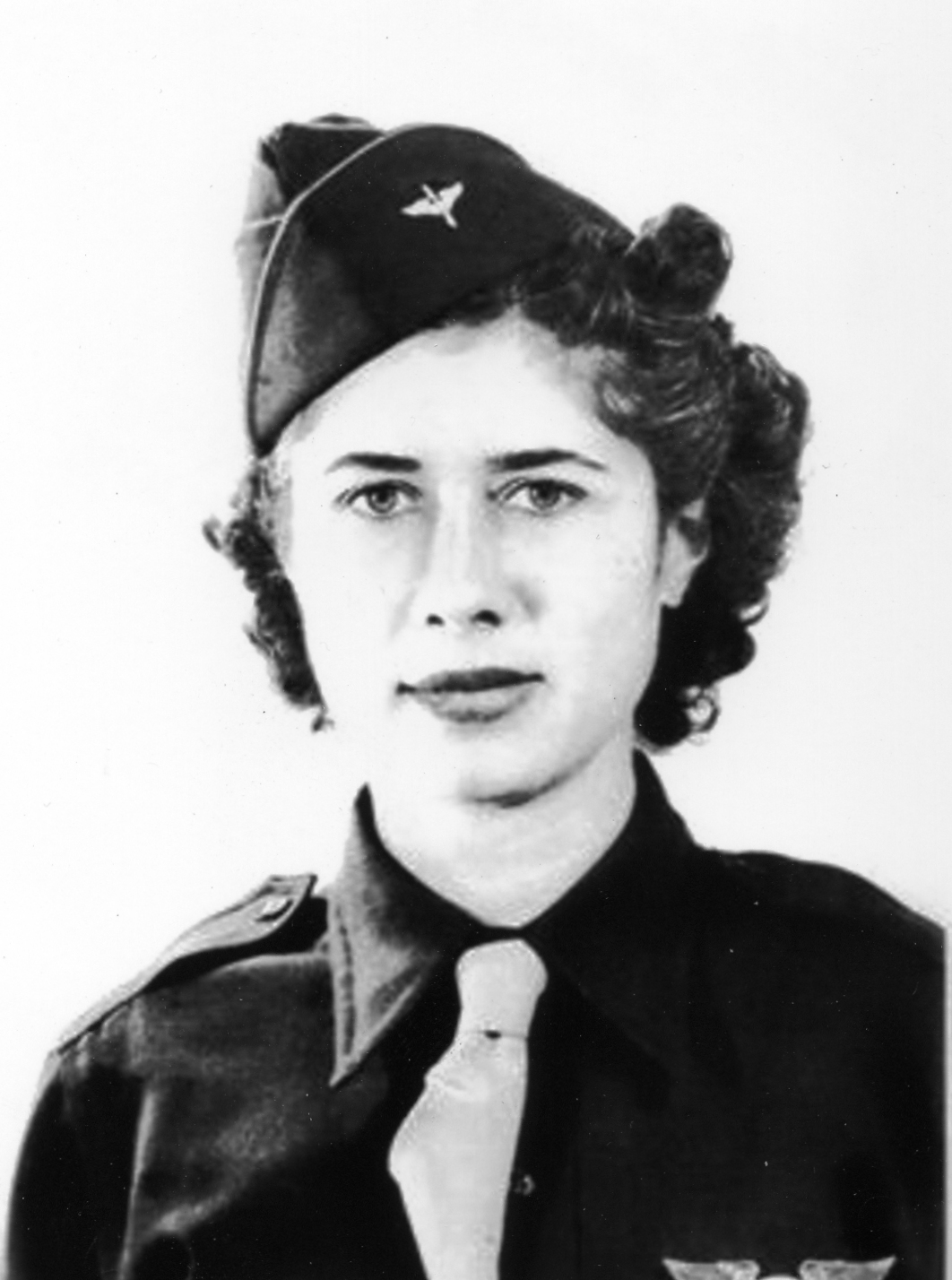

“Tommy” Tompkins was scheduled to make an overnight stop at Palm Springs, California. She never arrived.
Due to a series of errors, it was four days before the military recognized that Tompkins was missing. An extensive search was undertaken but was unsuccessful.
Gertrude Tompkins (Mrs. Harry M. Silver) was listed as Missing, Presumed Dead. She was one of 38 WASP pilots who died in service during World War II. She remains the only Women Airforce Service Pilots member still missing.
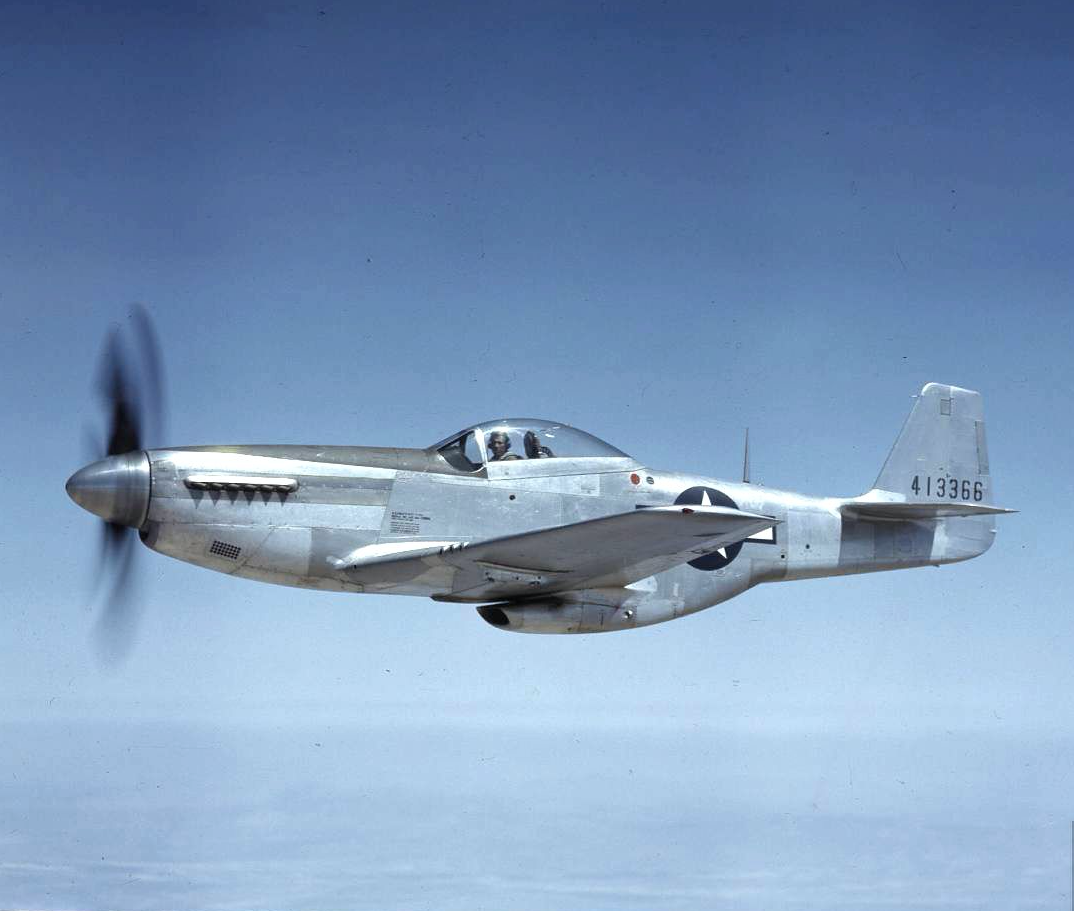
The WASPs were not combat pilots. They ferried aircraft across oceans, tested newly-manufactured aircraft for acceptance by the military, flew transport missions, and trained military pilots.
The WASPs received the same primary, basic and advanced flight training as their U.S. Army Air Force male counterparts. Some went on to specialized training in heavy bombers or fighters. Each woman had a civil pilot’s license and at least 200 hours of flight time. Over 25,000 women applied and approximately 1,900 were accepted. By the end of the war, 1,074 had graduated.
All of these women provided a great service to their country during a time of war, but even more so to the generations of women who would follow their path.
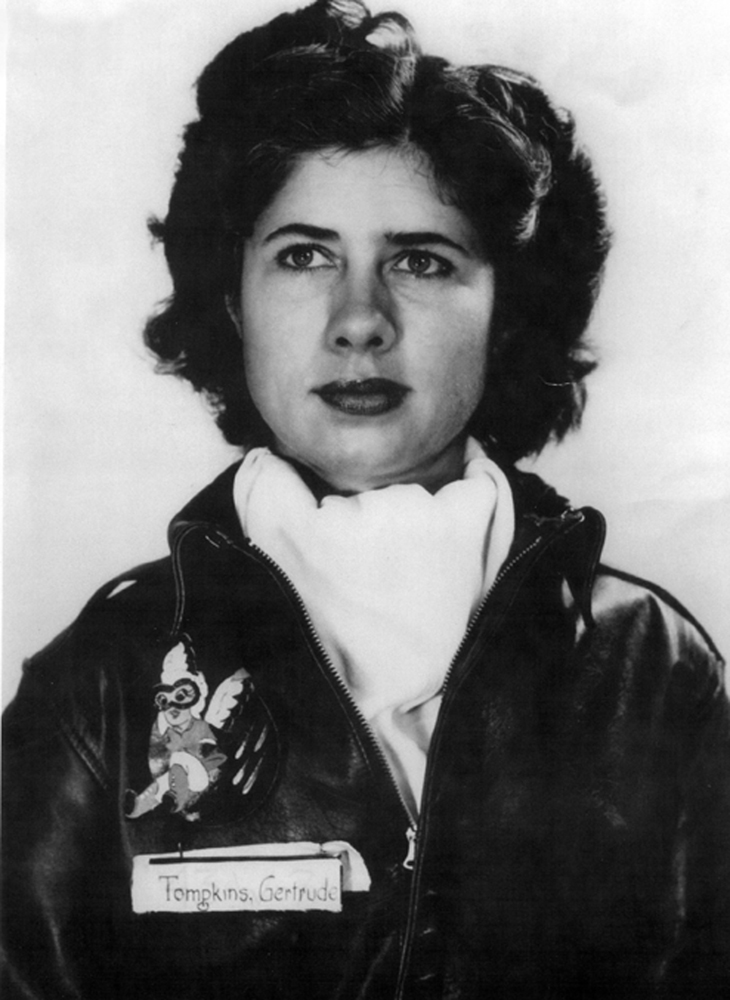
Gertrude Vreeland Tompkins was born at Jersey City, New Jersey, 16 October 1911.¹ She was the youngest of three daughters of Vreeland Tompkins, a chemist and founder of Smooth-On, Inc., and Laura Towar Tompkins.
Gertrude attended Kent Place School, a private girls’ school in Summit, New Jersey, and New York Preparatory School, then graduated from the Pennsylvania School of Horiticulture for Women, Ambler, Pennsylvania.
Gertude V. Tompkins had joined the Women Airforce Service Pilots (commonly called the “WASPs”), entering training 23 May 1943 at Avenger Field, Sweetwater, Texas, as a member of Class 43-W-7, along with 100 other women, and was one of 59 who graduated, 13 November 1943.² She trained in the North American Aviation AT-6 Texan advanced trainer and the Cessna AT-17/UC-78 twin-engine advanced trainer. She was assigned to the 601st Squadron, 555th Air Transport Command, 3rd Ferrying Group, as a Civilian Pilot.
On 22 September 1944,³ Miss Tompkins married Technical Sergeant Henry Mann Silver, U.S. Army, at the Tompkins’ summer home in Bridgehampton, New York. The ceremony was officiated by Rev. A. E. Leese.
By 26 October 1944, she had flown a total of 753.40 hours.
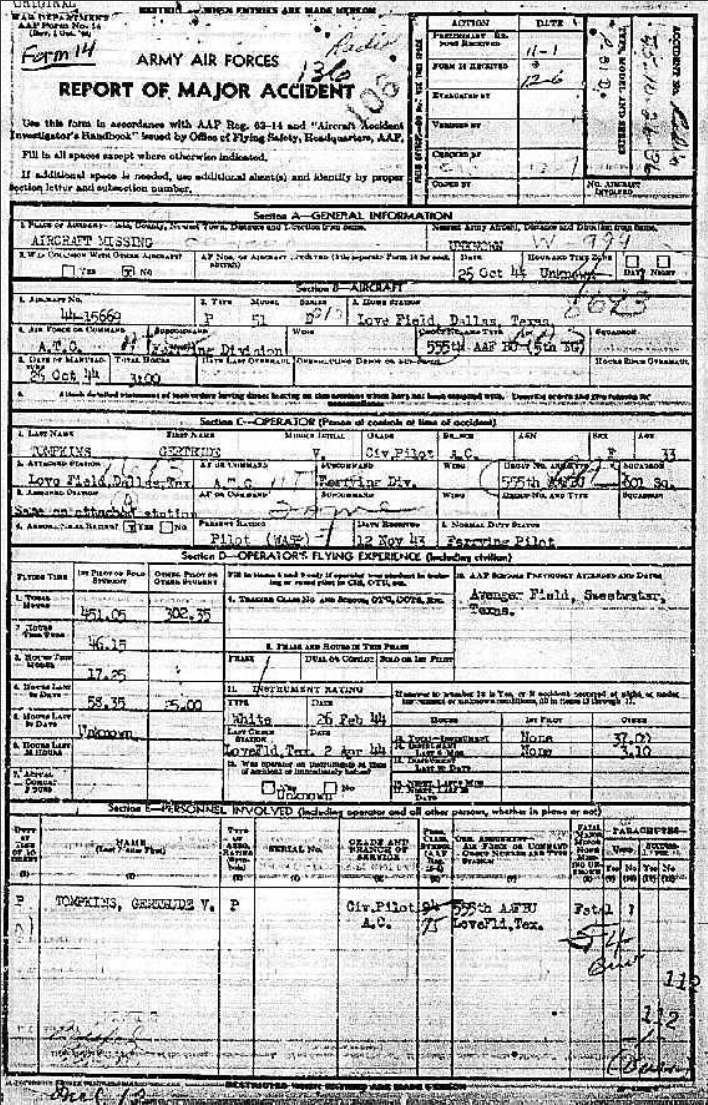
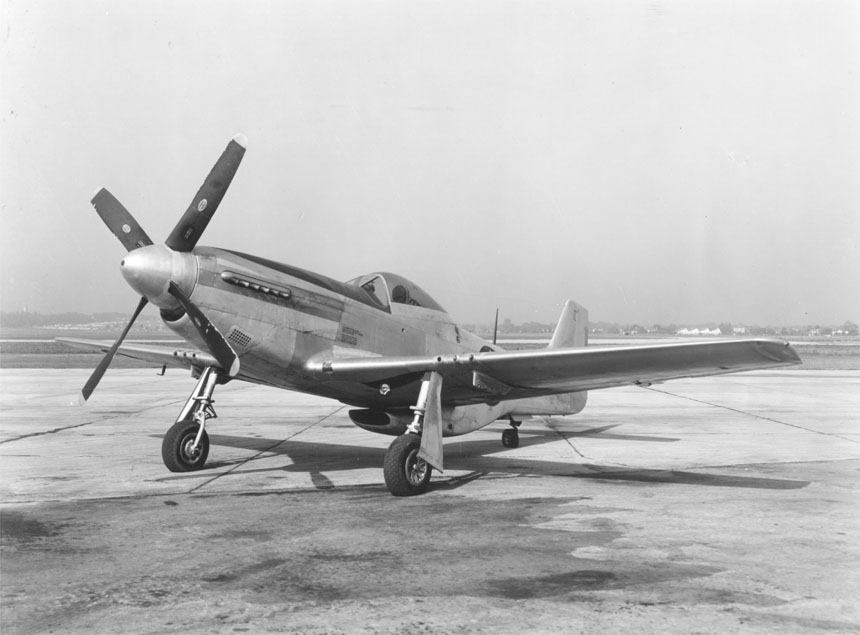
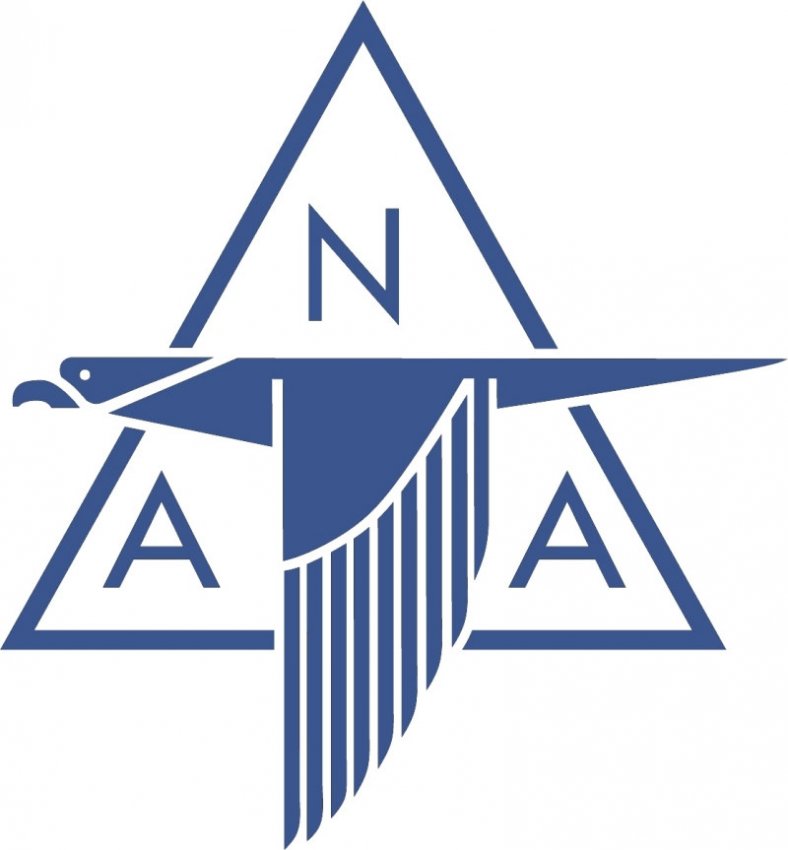
The P-51D was the predominant version of the North American Aviation World War II fighter. It was a single-seat, single-engine fighter, initially designed for the Royal Air Force. The P-51D was 32 feet, 3.5 inches (9.843 meters) long, with a wingspan of 37 feet (11.278 meters). It was 13 feet, 4.5 inches (4.077 meters) high. The fighter had an empty weight of 7,635 pounds (3,463 kilograms) and a maximum takeoff weight of 12,100 pounds (5,489 kilograms).
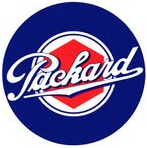
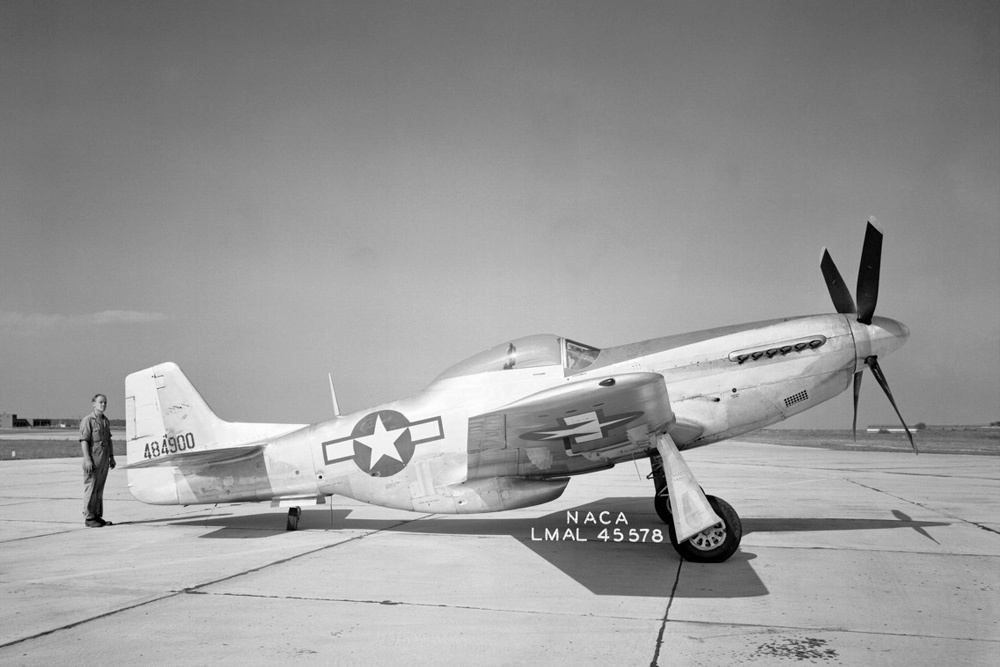
The P-51D with a V-1650-7 Merlin had maximum speed at Sea Level of 323 miles per hour (520 kilometers per hour) at the Normal Power setting of 2,700 r.p.m. and 46 inches of manifold pressure, and 375 miles per hour (604 kilometers per hour) at War Emergency Power, 3,000 r.p.m with 67 inches of manifold pressure (5 minute limit). At altitude, using the Military Power setting of 3,000 r.p.m. and 61 inches of manifold pressure (15 minute limit), it had a maximum speed of 439 miles per hour (707 kilometers per hour) at 28,000 feet (8,534 meters). With War Emergency Power the P-51D could reach 442 miles per hour (711 kilometers per hour) at 26,000 feet (7,925 meters).
The P-51D could climb to 20,000 feet (6,096 meters) in 6.4 minutes, and to its service ceiling, 41,600 feet (12,680 meters), in 28 minutes. The airplane’s absolute ceiling was 42,400 feet (12,924 meters).
With 180 gallons (681 liters) internal fuel, the maximum range of the P-51D was 1,108 miles (1,783 kilometers).
The P-51D was armed with six electrically-heated Browning AN-M2 .50-caliber machine guns, with three mounted in each wing. 400 rounds of ammunition were provided for the inner pair of guns, and 270 rounds for each of the other four guns, for a total of 1,880 rounds of ammunition. This was armor piercing, incendiary and tracer ammunition. The fighter could also carry a 1,000 pound (453.6 kilogram) bomb under each wing in place of drop tanks, or up to ten rockets.
A total of 8,156 P-51Ds were produced by North American at Inglewood, California, and Dallas, Texas, and another 200 by the Commonwealth Aircraft Corporation, Melbourne, Australia.
The North American Aviation P-51D Mustang remained in service with the United States Air Force until 27 January 1957, when the last aircraft were retired from the 167th Fighter Squadron, West Virginia National Guard.
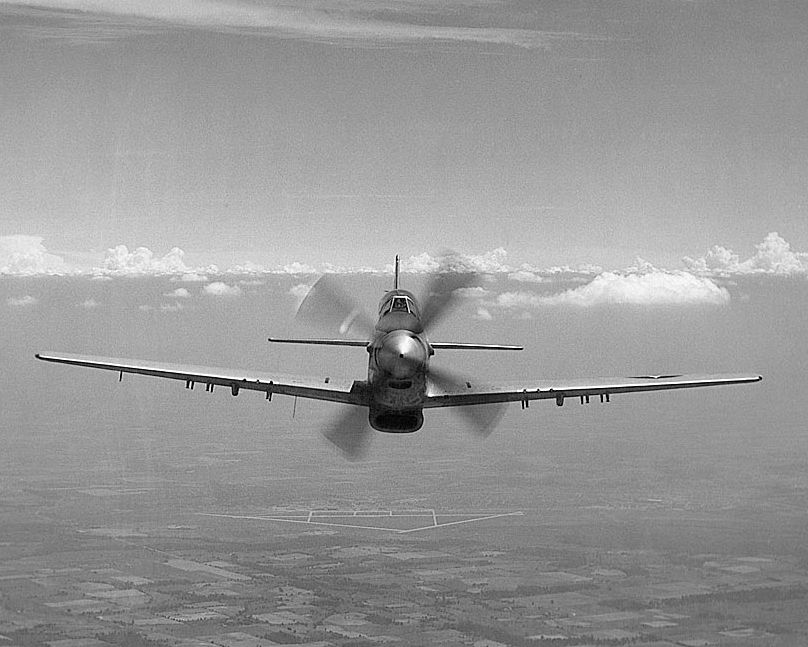
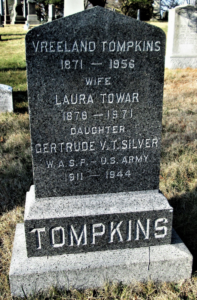 ¹ Many sources give Tompkins’ year of birth as 1912. However, she appears on a 1920 United States Census form, dated 13 January 1920, as being 8 years old. That would put her date of birth in the year 1911. She also appears on a 1940 U.S. Census Form, dated 8 April 1940, as 28 years old, once again indicating that her DoB is 1911. On a U.S. Department of Labor Immigration Service Form 630, List of United States Citizens arriving from Bermuda at the Port of New York aboard S.S. Fort Victoria, 31 March 1924, the entire Tompkins family is listed. Gertrude’s year of birth is shown as “1911.” On a similar Form 630, dated 22 February 1936, Miss Tompkins is listed as arriving aboard S.S. Monterey at the Port of Los Angeles, from Sydney, N.S.W., Australia. Her date of birth is given as “OCT 16th 1911.” Another Form 630, showing that the Tompkins family arrived at the Port of New York aboard S.S. Tela, lists Miss Tompkins’ date of birth as “Oct. 16,1911”. Lastly, Gertrude V. T. Silver’s name appears on a cenotaph at Green-Wood Cemetery, Brooklyn, New York, showing the dates of birth and death as “1911–1944.”
¹ Many sources give Tompkins’ year of birth as 1912. However, she appears on a 1920 United States Census form, dated 13 January 1920, as being 8 years old. That would put her date of birth in the year 1911. She also appears on a 1940 U.S. Census Form, dated 8 April 1940, as 28 years old, once again indicating that her DoB is 1911. On a U.S. Department of Labor Immigration Service Form 630, List of United States Citizens arriving from Bermuda at the Port of New York aboard S.S. Fort Victoria, 31 March 1924, the entire Tompkins family is listed. Gertrude’s year of birth is shown as “1911.” On a similar Form 630, dated 22 February 1936, Miss Tompkins is listed as arriving aboard S.S. Monterey at the Port of Los Angeles, from Sydney, N.S.W., Australia. Her date of birth is given as “OCT 16th 1911.” Another Form 630, showing that the Tompkins family arrived at the Port of New York aboard S.S. Tela, lists Miss Tompkins’ date of birth as “Oct. 16,1911”. Lastly, Gertrude V. T. Silver’s name appears on a cenotaph at Green-Wood Cemetery, Brooklyn, New York, showing the dates of birth and death as “1911–1944.”
² Women Airforce Service Pilots Official Archive, Texas Woman’s University, 43-W-7 Class List
³ Brooklyn Daily Eagle, Vol. 103, No. 265, Wednesday, 27 September 1944, Page 17, at Column 3
© 2023, Bryan R. Swopes
